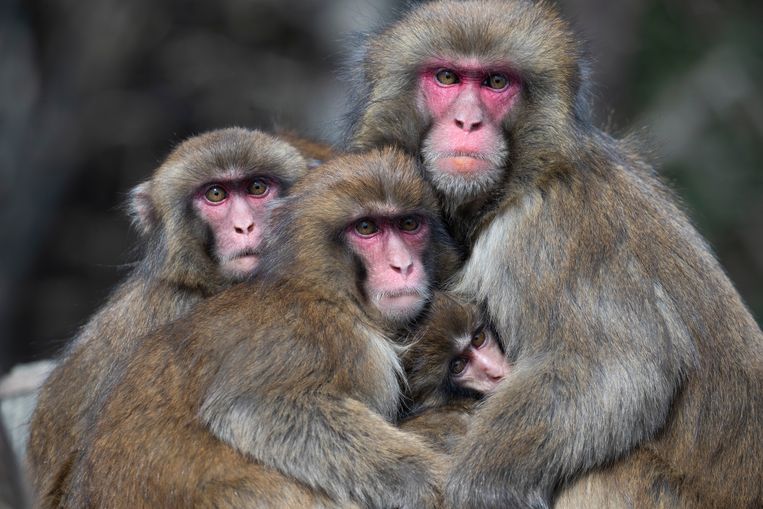Apes

Apes, our closest living relatives in the animal kingdom, have captivated human interest for centuries. From their remarkable intelligence to their intricate social structures, apes offer a window into the complex world of non-human primates. This article explores the diverse species of apes, their behavior, cognitive abilities, and the challenges they face in the wild.
The Ape Family:
Apes belong to the biological superfamily Hominoidea, which includes two families: Hylobatidae (gibbons and siamangs) and Hominidae (great apes and humans). The great apes comprise four extant genera: Pongo (orangutans), Gorilla (gorillas), Pan (chimpanzees and bonobos), and Homo (humans). Each species has unique characteristics that contribute to their overall significance in the animal kingdom.
-
Orangutans (Pongo):
Orangutans are native to the rainforests of Borneo and Sumatra in Southeast Asia. Known for their distinctive reddish-brown fur, long arms, and expressive faces, orangutans are solitary creatures, with males having a largely solitary lifestyle. They are also renowned for their exceptional arboreal skills, spending most of their time in trees.
-
Gorillas (Gorilla):
Gorillas are the largest living primates and are divided into two species: the western gorilla (Gorilla gorilla) and the eastern gorilla (Gorilla beringei). Gorillas live in social groups led by a dominant silverback male, and their habitats range from dense forests to mountainous regions. These gentle giants exhibit complex social behaviors and are known for their close family bonds.
-
Chimpanzees and Bonobos (Pan):
Chimpanzees (Pan troglodytes) and bonobos (Pan paniscus) share approximately 98% of their DNA with humans, making them our closest living relatives. Chimpanzees are found in West and Central Africa, while bonobos inhabit the forests of the Democratic Republic of Congo. Both species are highly intelligent and exhibit complex tool use, communication, and problem-solving skills.
Chimpanzees are known for their territorial and sometimes aggressive behavior, while bonobos are characterized by their peaceful and matriarchal social structures. Studying these species provides valuable insights into the evolution of human behavior and social dynamics.
Behavior and Intelligence:
Apes exhibit a wide range of behaviors that showcase their intelligence, problem-solving abilities, and emotional complexity. Studies have revealed remarkable cognitive skills among various ape species:
-
Tool Use:
Several ape species are adept tool users. Chimpanzees use sticks to extract insects from tree bark, while bonobos use tools for various purposes, including opening nuts. Tool use among apes is considered a sign of advanced cognitive abilities and the ability to solve problems.
-
Communication:
Apes communicate using a combination of vocalizations, facial expressions, and gestures. Chimpanzees, for example, have a complex system of communication involving different vocalizations and body language. Bonobos, known for their peaceful societies, also rely heavily on communication to maintain social bonds.
-
Self-Awareness:
Apes, particularly chimpanzees and orangutans, have demonstrated self-awareness through mirror self-recognition tests. This ability suggests a level of consciousness and introspection not previously attributed to non-human animals.
-
Social Structures:
Apes exhibit diverse social structures, ranging from the solitary lifestyle of orangutans to the complex social groups of gorillas and chimpanzees. Social bonds play a crucial role in their survival, with intricate hierarchies and relationships influencing group dynamics.
Conservation Challenges:
Despite their remarkable qualities, apes face numerous threats that endanger their survival. Habitat loss, poaching, and diseases pose significant challenges to ape populations. Deforestation due to logging, agriculture, and urbanization diminishes their natural habitats, pushing them to the brink of extinction.
-
Deforestation:
The rapid loss of tropical forests is a critical threat to ape populations. As their habitats shrink, apes are forced into smaller and fragmented areas, leading to increased competition for resources and heightened vulnerability to poaching.
-
Poaching:
The illegal trade of ape body parts, often driven by demand for traditional medicine or as exotic pets, continues to pose a severe threat to their populations. Orphaned apes, victims of poaching, face a bleak future, as they are often unable to survive in the wild without maternal care and socialization.
-
Disease:
Apes are susceptible to diseases transmitted by humans, including respiratory infections and deadly viruses. The proximity of human settlements to ape habitats increases the risk of disease transmission, posing a serious threat to their already fragile populations.
Conservation Efforts:
Efforts to protect apes and their habitats are crucial for ensuring their survival. Conservation organizations, governments, and local communities play a vital role in implementing strategies to address the challenges faced by apes:
-
Protected Areas:
Establishing and maintaining protected areas is essential for preserving ape habitats. These areas provide a refuge for apes and other wildlife, allowing them to thrive without the immediate threat of habitat destruction.
-
Anti-Poaching Measures:
Strengthening anti-poaching efforts and enforcing laws against the illegal wildlife trade are crucial steps in protecting apes. Anti-poaching units, community involvement, and education initiatives help raise awareness about the importance of conserving ape populations.
-
Habitat Restoration:
Efforts to restore degraded habitats and promote sustainable land-use practices are essential for reversing the impacts of deforestation. Reforestation projects contribute to creating larger and more connected habitats for apes.
-
Community Engagement:
Involving local communities in conservation efforts is key to the success of ape protection initiatives. Engaging communities in sustainable development projects, providing alternative livelihoods, and educating them about the importance of preserving wildlife contribute to long-term conservation success.
Conclusion:
Apes, with their intelligence, complex social structures, and similarities to humans, offer a unique opportunity for us to better understand the natural world. However, the challenges they face, primarily driven by human activities, underscore the urgency of conservation efforts. By addressing habitat loss, poaching, and disease transmission, we can contribute to the preservation of these remarkable creatures and ensure a future where apes continue to thrive in their natural environments. The responsibility lies with us to act as stewards of the planet, fostering coexistence and harmony between humans and our closest living relatives.












Post Comment